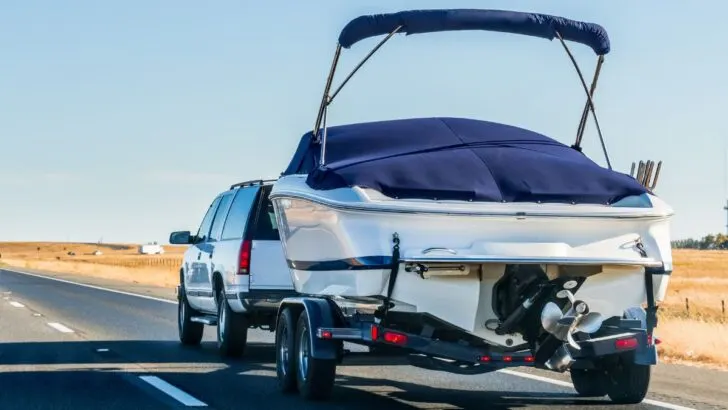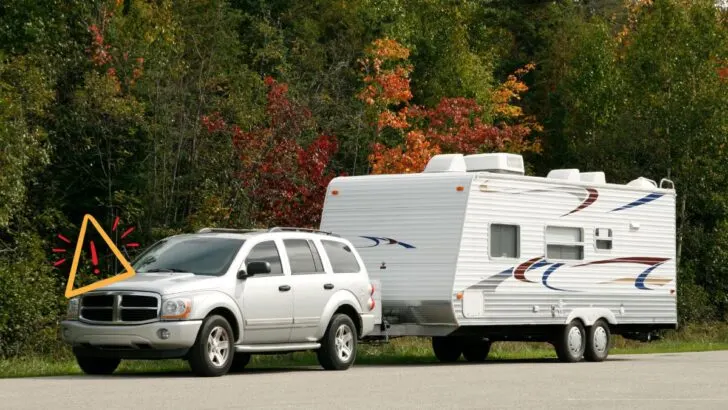Towing heavy loads can place a significant amount of strain on a vehicle, and the automatic transmission often bears the brunt of this burden. If you’re wondering if towing with an automatic transmission can result in permanent damage to the vehicle, then you’ve come to the right place!
Towing can potentially damage an automatic transmission if the weight of the towed load exceeds the vehicle’s towing capacity or if the vehicle is not properly equipped to handle the added strain. Overheating and excessive wear and tear from continuous heavy-duty towing can lead to serious transmission problems over time.
In this article, we delve into whether and how towing can potentially damage an automatic transmission and provide insights on preventive measures to safeguard your vehicle’s transmission health.
Table of Contents
Potential Towing Damage to Automatic Transmissions
Transmission Fluid Issues
When it comes to towing, there are several potential sources of damage that can affect automatic transmissions. One critical aspect to consider is transmission fluid.
Towing places a significant strain on the transmission by causing it to generate more heat than usual.
This reduced lubrication causes increased friction and overheating, which can damage the transmission’s internal components.
Differential Damage
Another area of concern is the differential. The differential is responsible for distributing power between the wheels and allowing them to rotate at different speeds when turning.
A damaged or malfunctioning differential on either the towing vehicle or the towed vehicle can lead to issues such as wheel slippage, difficulty turning, or even complete drivetrain failure.
Wear and Tear on Gears
Towing can contribute to increased wear and tear on the gears of an automatic transmission.
For a towing vehicle, the additional weight places a heavier load on the transmission, causing the gears to work harder than they would under normal driving conditions.
Over time, this can lead to gear damage or accelerated wear, resulting in rough shifting, gear issues, or transmission failure.

Preventing Automatic Transmission Damage While Towing
1. Use the right towing equipment
Invest in a towing setup that is appropriate for your vehicle and the load you intend to tow.
This includes a compatible hitch, receiver or ball mount, and safety chains.
Using the correct equipment ensures a secure connection between your towing vehicle and the vehicle or trailer being towed, minimizing stress on the transmission of both vehicles.
2. Distribute weight properly
Ensure that the load you’re towing is evenly distributed on the dolly or trailer.
Uneven weight distribution can cause the transmission to work harder on one side, potentially leading to damage.
This can also be true for a towed vehicle that is not properly aligned on a dolly since the transmission components will still be rotating while the vehicle is being pulled.
3. Avoid excessive speeds
Maintain moderate speeds while towing to reduce stress on both vehicles.
Sudden accelerations can put unnecessary strain on the transmission of the towing vehicle and increase the risk of damage to both vehicles as well as the towing equipment.
Using smooth and gradual acceleration and deceleration is recommended.
4. Take breaks
Extended periods of towing can lead to increased heat buildup in the transmission and other rotating parts of both vehicles.
To prevent overheating, take breaks at regular intervals during long trips to allow the vehicles to cool down.
Towing Techniques for a Safe Experience
Practice proper weight distribution
Distribute the weight of the load evenly on the trailer and make sure it is within the recommended weight limits.
An imbalanced load can affect vehicle stability and handling, potentially leading to accidents or damage.
Slow down and drive cautiously
Towing adds extra weight and changes the overall feel and handling of your vehicle. Reduce your speed and drive at a moderate pace.
Avoid sudden acceleration, hard braking, and sharp turns since these actions can put strain on the towing vehicle and affect stability.
Monitor temperature gauges
Keep an eye on the temperature gauges of both your towing vehicle and the towed vehicle.
If you notice any signs of overheating on either vehicle, such as high engine or transmission temperatures, pull over to a safe location and allow the system to cool down before continuing.
Be cautious while reversing
Reversing with a towed vehicle or trailer can be challenging.
Take your time and make small adjustments to ensure you have clear visibility and control while backing up.
Regularly check your towing setup
Periodically inspect the towing equipment, including the hitch, receiver, safety chains, and trailer brakes.
Ensure they are in good condition and securely connected before you start towing.
Plan your route and be aware of height restrictions
Research and plan your route ahead of time, taking into account any low bridges, tunnels, or other obstacles, such as road work, that could interfere with your towing setup.
Height restrictions can be particularly important to consider when towing vehicles on a raised flatbed trailer.
Understanding Towing Capacity and Ratings
Towing capacity refers to the maximum weight a vehicle can tow without exceeding its structural limits or compromising safety.
It is determined by various factors, including the vehicle’s engine power, transmission, suspension, braking system, and frame strength.
To determine the appropriate towing capacity, it is important to consider the Gross Vehicle Weight Rating (GVWR), Gross Combination Weight Rating (GCWR), and Gross Axle Weight Rating (GAWR).
- The GVWR is the maximum weight the vehicle can handle, including the vehicle itself, passengers, cargo, and more.
- The GCWR is the total weight of the vehicle, trailer, cargo, and passengers.
- The GAWR is the maximum weight that each axle can support.
Exceeding the towing capacity can lead to numerous issues, such as excessive strain on the engine, transmission, and brakes, as well as decreased handling and stability and increased stopping distances.
It can also result in damage to the vehicle’s drivetrain and transmission components and compromise overall safety on the road.
In addition to towing capacity, it is important to be aware of other ratings related to towing, such as the Gross Trailer Weight (GTW) and tongue weight limits.
The GTW is the total weight of a loaded trailer, while the tongue weight refers to the downward force on the hitch by the trailer.
Towing capacity can vary among different configurations of the same model of vehicle, and can drastically change from year to year on the same model, so always try to check the manufacturer’s specifications for your specific vehicle!
When in doubt, it is always best to choose a lower load that falls comfortably within the recommended towing capacity.
If you found this article helpful, make sure to take a look at the other towing-related posts below!
